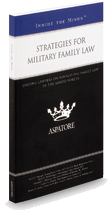Filing for divorce requires addressing multiple financial matters, yet spousal support is often one of the most disagreeable. While most parents recognize that they have the responsibility to provide financial support to their children, and couples typically understand that dividing marital property is a necessary part of divorce, the issue of spousal support tends to cause particularly heated debates.
No one wants to be taken advantage of, and spousal support is often misunderstood, so many divorcing individuals are reluctant to pay a portion of their income to their soon-to-be-ex. However, in certain situations, a higher-earning spouse may be required to pay spousal support to the lower-earning spouse as part of their divorce order.
What Is Spousal Support?
Spousal support is also known as alimony or maintenance, and one spouse pays it to the other spouse during or after the divorce process. Spousal support is typically awarded in cases that involve a significant difference in the income of both parties. For example, if one spouse works full time and the other spouse remains unemployed to care for their children or perform domestic duties, the law recognizes that the party who did not work a traditional job was still instrumental in supporting the family but may face difficulty securing employment after an extended period out of the workforce. Spousal support payments are designed to help the lower-earning spouse maintain the same standard of living after a divorce that they enjoyed during the marriage.
What Types of Spousal Support Are Available in Illinois?
Spousal support comes in four forms – temporary, fixed-term, reviewable, and permanent.
- Temporary support. Temporary alimony is granted when a divorce case is pending to help the recipient spouse meet their ongoing financial needs until a judge issues a final spousal support order. The judge can evaluate the income of the recipient spouse, the income of the paying spouse, if the paying spouse also must pay child support, and if the recipient spouse requires assistance financially. Temporary support usually ends when the divorce is finalized, and a new support order is created
- Fixed-term support. Fixed-term support is awarded as a final support order and lasts for a set duration of time to allow the recipient to become financially self-supportive (known as rehabilitative alimony). This type of support is usually appropriate if the recipient spouse gave up a career to take on homemaking or child rearing duties, neglected to pursue an education or career because they relied on the paying spouse’s income, or has limited earning capacity and must receive educational or vocational training to secure employment.
- Reviewable support. Reviewable spousal support is similar to fixed-term support but is ordered for an indefinite period of time and requires periodic review at set intervals to determine if the alimony should continue, be modified, or terminated. The court expects the recipient spouse to make good faith efforts to become self-supporting (with regard to their age, skills, and experience), and this type of support is often contingent on such efforts. Reviewable support may be necessary if the recipient spouse does not have a clear path toward financial independence or if their childrearing duties hinder their ability to effectively pursue education or vocational training.
- Permanent support. In some cases, the court will order permanent spousal support to be paid for the remainder of the recipient spouse’s lifetime. This is usually reserved for spouses who cannot support themselves after a divorce and will be unable to do so in the foreseeable future, often due to age, illness, or other unavoidable factors. Permanent support is only available if the marriage lasted at least 20 years, and the court may decide either to order maintenance for life or for the length of the marriage.
Do I Qualify for Spousal Support?
Either spouse can request support financially from the other during divorce proceedings, but the court will only approve requests in which the petitioning spouse demonstrates a clear need for financial assistance. If both spouses are self-supporting, the spousal support requested may be denied, even if one spouse earns significantly more income than the other. In this case, the court may attempt to make up for this difference by distributing a larger portion of the marital property to the lower-earning spouse.
The court will consider the following factors when determining whether to grant spousal support:
- Each spouse’s property and income
- Each spouse’s financial obligations, including child support
- Each spouse’s expenses, such as rent, mortgage, or utility bills
- Each spouse’s health, physical and emotional, and age
- The earning potential of each spouse, both currently and in the future based on their work experience, education, or training
- Whether the earning capacity of the petitioning spouse was impacted by delaying or halting education, training, or career opportunities to care for children or the household
- Whether the petitioning spouse contributed to the other spouse’s career advancement or earning capacity, such as taking care of household responsibilities so they could focus on their education, paying their tuition, or assisting them with academic work
- The amount of time the petitioning spouse needs to acquire the education, training, and employment to become self-supporting
- The length of the marriage
- The standard of living of both spouses during the marriage
- Whether a prenuptial or postnuptial agreement specifies if spousal support should be paid and/or outlines the duration and amount of payments that were agreed upon
- The potential tax consequences of spousal support
How Is Spousal Support Calculated?
If a judge decides to order spousal support in St. Louis, they generally use a specific formula set out in Illinois law to calculate the amount of the support payments. According to this formula, the paying spouse is responsible for making an annual support contribution that equals 33% of the paying spouse’s net annual income minus 25% of the recipient spouse’s net annual income. However, the total amount of the recipient’s net annual income plus the annual spousal support they receive cannot comprise more than 40% of the net annual income of both parties combined.
Contact Stange Law Firm to Discuss Your Case
Spousal support can be complicated, and working with an attorney is the best approach to protect your interests. Whether you plan to request spousal support from your ex or you believe they will request spousal support from you, Stange Law Firm can help you understand how spousal support laws apply to your case and explain what to expect from your support determination. We can also help you modify an existing support order if the order issued during your divorce no longer accurately reflects your financial situation. Contact us today to learn more.



